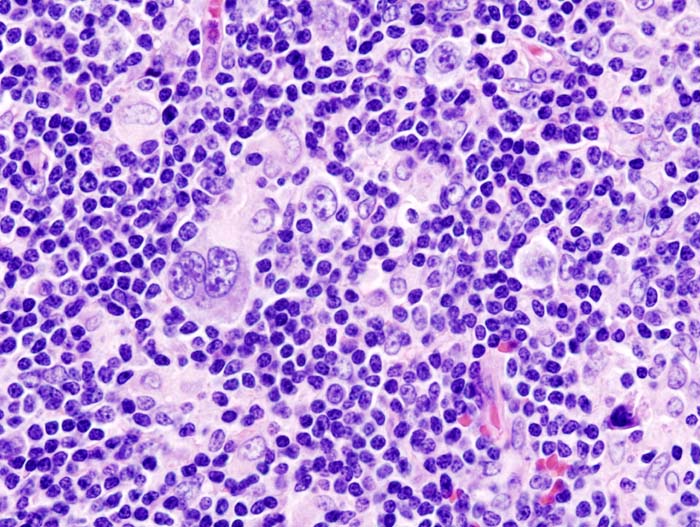What is Multiple Myeloma?
Multiple Myeloma, also known as Myeloma, is a type of bone marrow cancer. Myeloma can affect many areas around the body, although the most commonly affected areas include the spine, skull, pelvis, and ribs. When cancer attacks more than one area it is known as Multiple Myeloma.
Cancer originates in plasma cells called Lymphocytes. These cells are a type of white blood cell made in bone marrow which is the spongy material you see in the centre of large bones in the body. Normally plasma cells form part of the immune system and stave off infection. When the cells are abnormal they multiply rapidly and produce an antibody known as paraprotein. Rather than forming a tumor, myeloma causes the diseased cells to divide and expand within the bone marrow which then affects how the healthy blood cells are produced.
Myeloma is a type of relapsing-remitting cancer. At certain times patients will have symptoms or complications requiring treatment, and at other times there will be periods of remission and no need for treatment.
What are the Signs and Symptoms of Myeloma?
Myeloma may not cause any symptoms in the early stages of the disease, although it is possible that a routine blood test or a urine test could pick up an issue before diagnosis. Eventually, a range of symptoms may well manifest themselves and these can include:
- Bone pain – most often a persistent dull ache in the back, ribs or hips.
- Bone fractures and spinal cord compression
- Anaemia – Multiple Myeloma affects the production of blood cells in bone marrow so it can lead to a lack of red blood cells. Anaemia leaves you feeling very tired, weak and breathless.
- Raised calcium levels in the blood leading to hypercalcaemia. This causes extreme thirst, feeling sick, needing to urinate frequently, constipation, confusion, and drowsiness.
- Unusual bleeding such as nosebleeds, heavy periods and bleeding gums.
- Thickened blood or hyperviscosity, which can cause blurred vision, headaches, dizziness, bleeding from the gums or nose, and shortness of breath.
- Kidney problems, potentially leading to kidney or renal impairment, or kidney or renal failure.
- Weight loss
Causes and Risk Factors for Myeloma
The exact cause of Multiple Myeloma is unknown, however, experts have identified a number of potential causes and risk factors that may contribute to the disease. The most important factor is that Multiple Myeloma is closely linked with a condition known as monoclonal gammopathy of unknown significance (MGUS), where a person has an excess number of protein molecules called immunoglobulins in their blood. There are no symptoms for MGUS and the condition does not warrant treatment. However, in almost all cases, Multiple Myeloma occurs in someone who previously had MGUS.
Other factors
- Age. Most cases are diagnosed at around the age of 65-70.
- Gender. Men are more likely to develop Multiple Myeloma than women
- Ethnicity. Multiple Myeloma is more likely among black people than white or Asian people.
- Reduced immunity due to HIV or medication.
- Obesity
- Exposure to radiation.
- Family history. Multiple Myeloma runs in some families, especially those related to someone with MGUS. Someone with a sibling or parent with Myeloma is 4 times more likely to get it.
- Medical history of other plasma cell diseases
5 Year Survival Rates
The figures below give an indication of the number of patients that lived for at least 5 years after being diagnosed with Multiple Myeloma.
Men 49.8%
Women 43.8 %
Recommended Treatment for Multiple Myeloma
For further information on available treatments, please see our recommended treatment for Multiple Myeloma page.
